No matter how careful you are as a gardener, pests will eventually find your plants. Thrips are one of the most notorious and abundant pests for pepper plants. They can attack indoors or outdoors, and are very good at reproducing quickly.
How you deal with pests is up to you, but we prefer to use natural methods whenever possible. So, in this article, we’ll discuss a few safe methods for how to control thrips.
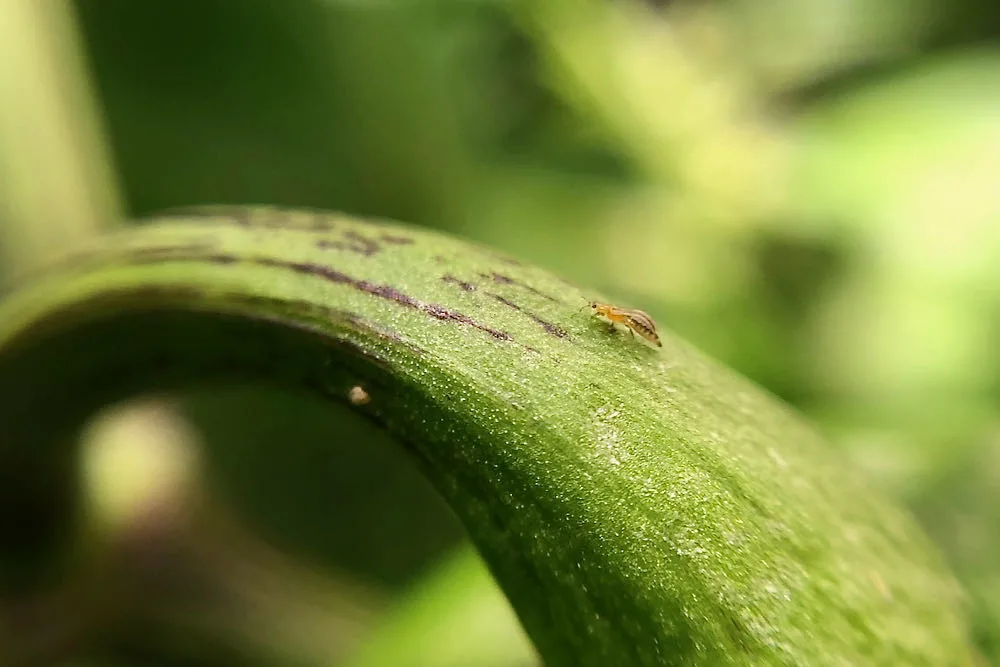
Controlling Thrips
First, we will assume you already have thrips on your plants. These are some of the methods you can try to kill thrips, or at least reduce the population in your garden. Keep in mind, thrips are very difficult to completely eradicate, but these measures can help reduce the damage they inflict.
Spray Them Off Manually
One of the first action items against thrips is to spray the plants off with water. If your plants are indoors, carefully take them to the shower or kitchen sink. Then, using a moderately powerful stream, spray off all the leaves, top and bottom.
Thrips do not hold on to foliage well, and will easily be knocked off. They also react to disturbance, usually making them fall from the leaves.
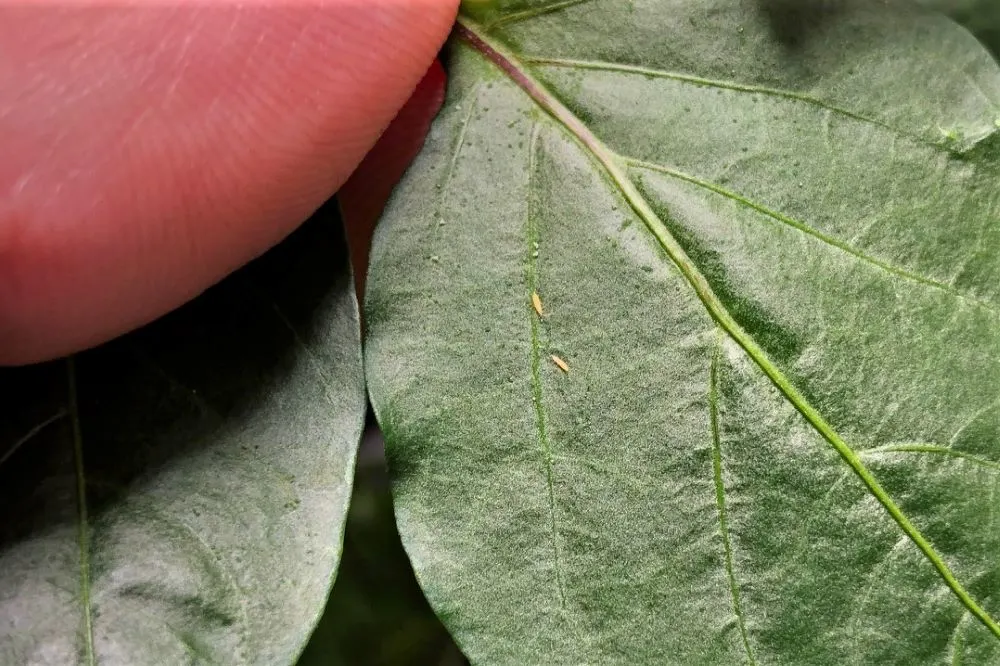
Tip: If the your plant’s leaves are thick and strong (such as a monstera, snake plant, or succulents), use a lint roller to catch the thrips easily. This helps remove any smaller larvae that are difficult to see.
This method of spraying with water definitely helps reduce the population of larval or adult thrips. However, there are likely eggs in the plant tissue that will be hatching into new thrip larvae soon.
Attract or Buy Predatory Insects
There are many insects that eat thrips as a meal. These include green lacewings, minute pirate bugs, and predatory mites. These can be bought online, or better yet, attracted to the garden with companion plants.
To attract lots of beneficial insects to the garden, you’ll want to start by planting flowers. We recommend alyssum, tansies, cosmos, yarrow, and various asters. The wider the variety of flowers, the better for attracting a broad range of local insects to help patrol your plants.
Spray Insecticidal Soap (Get on Amazon)
If you are in a situation where predatory insects are not an option (such as indoor growing), you may need to resort to insecticides. I only recommend spraying if your plants are indoors, as beneficial insects are off the table!
With that in mind, insecticidal soap can help kill off a variety of pests, including thrips, aphids, and whiteflies. However, these sprays will also kill many beneficial insects. For this reason, it should not be the first thing you try.
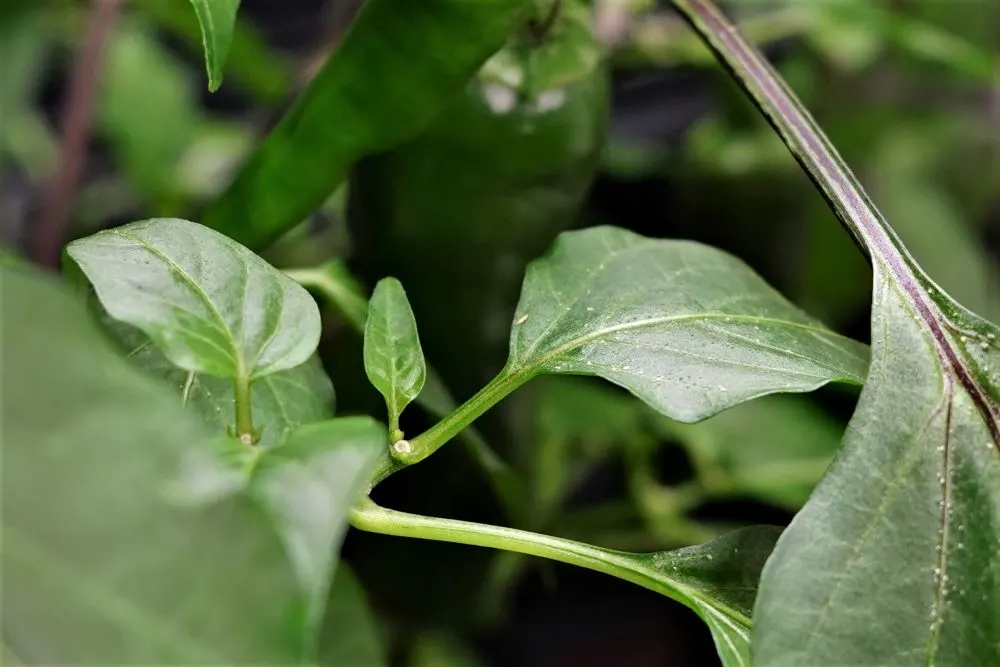
Keep in mind, many of the soaps come in a concentrated form, and must be diluted with water. This is the most economical route to take if you want to spray with an insect-killing soap.
Note: Dish soap is not the same as insecticidal soap! Insecticidal soap is specifically formulated to reduce the harm to your plants, while killing a broad range of insects.
Spray with Spinosad (Get on Amazon)
Lastly, we have had great success against thrips by spraying spinosad. This is a substance that is produced by a soil bacterium, and is known to kill some insects that feed on plants. It also has a reputation for sparing many of the beneficial insects that do not harm your plants.
Note: Spinosad can kill bees if they feed on pollen or nectar that has been sprayed. Avoid spraying spinosad products when bees are active or blossoms are open.
Preventing or Reducing Thrips
Indoor growers often have to start over from scratch after a thrip outbreak. To avoid future incidents with thrips, try using these tips.
Sterilize Indoor Soil
More often than not, thrips make it into your indoor grow space via the soil. They do lay eggs directly in plant tissue, but they can also lay eggs in the soil to overwinter.
Next time you pick up a new bag of soil for your indoor plants, consider sterilizing it before use. After all, potting soil is not true soil, and does not have the same “living soil” makeup that in-ground garden beds have. It can give you peace of mind against not only thrips, but also aphids, whiteflies, and fungus gnats.
To sterilize soil (before planting only!):
- Boil water
- Pour directly into potting soil
- With a large spoon, stir thoroughly, careful to avoid burning yourself
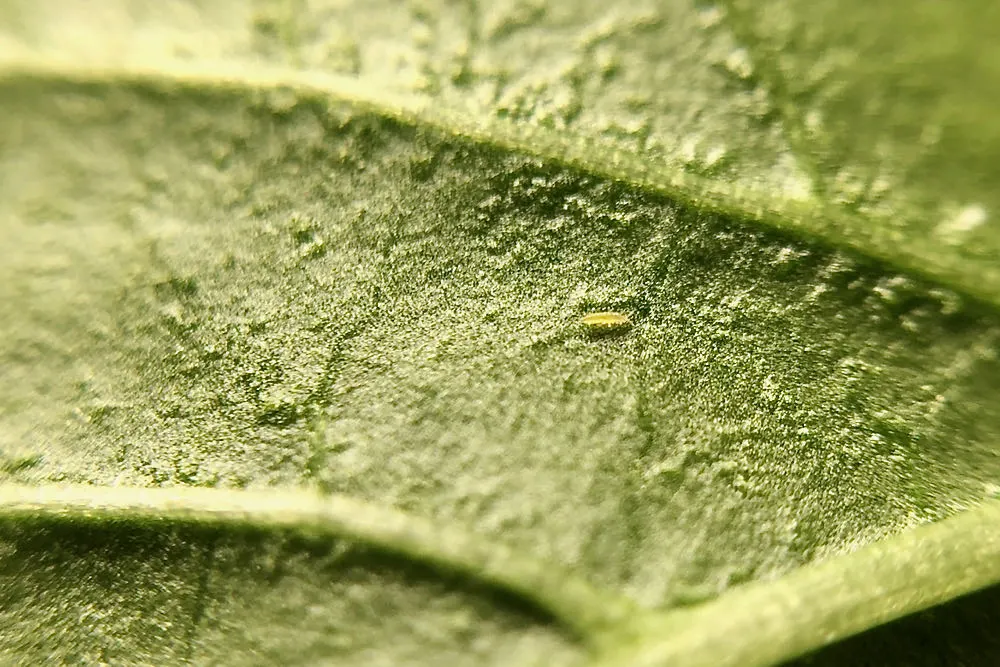
Some gardeners recommend sterilizing soil by baking it, but this could be dangerous. If you insist on baking your soil, keep a close eye on it, and be sure to keep the temperature relatively low to avoid any of the contents combusting.
Check Nursery Plants for Thrips Damage
Another common way of ending up with thrips is from that shiny new plant you brought home from the plant nursery. We have attributed pest outbreaks to specific nursery plants on more than one occasion!
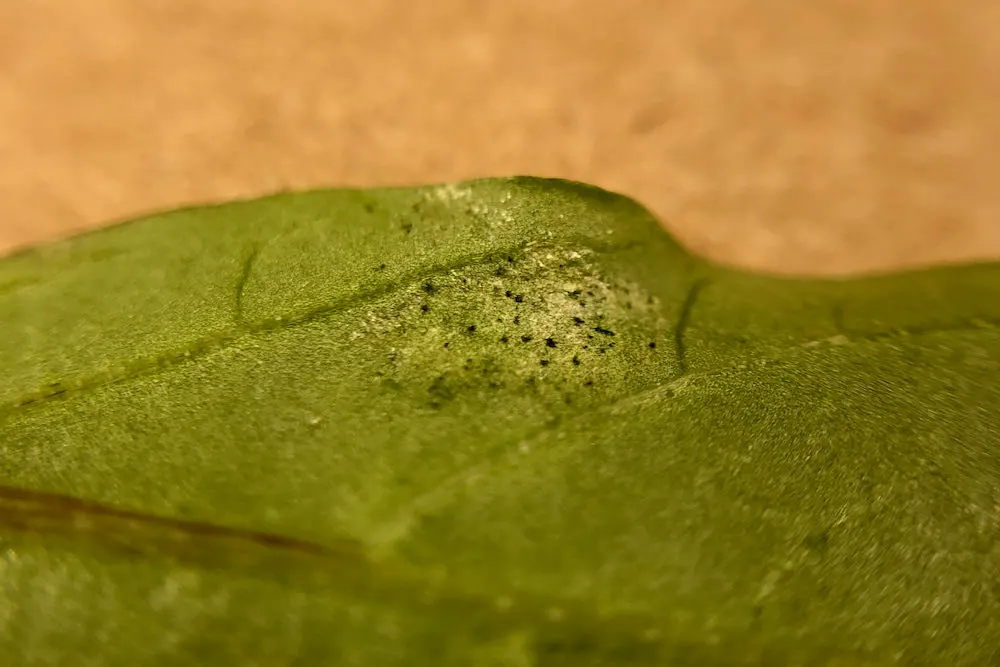
While you may not see thrips larvae on plants, look for the damage they leave behind. These small white patches are often speckled with black dots. If you see this, run! It is likely the entire nursery has an issue and it is better safe than sorry.
Use Row Cover Fabric For Young Plants
For outdoors gardeners, it is a different ball game. Definitely plant companion flowers to attract those predatory insects. But you can also use floating row cover or insect fabric to keep thrips off your young plants.
Using a covering helps protect against insects, but also small animals like rabbits and mice. For the first few weeks outdoors, our peppers are under row cover, but some plants can remain under the covering for their entire life.
Avoid Over-Fertilizing
Thrips feed directly on foliage. Avoid using too much nitrogen-rich fertilizer on your plants, which is said to encourage larger thrips populations. Stick to a schedule, and always err on the side of less fertilizer rather than more.
Use A Light-Colored Mulch
Lastly, you can try using a light-colored or reflective mulch around your vegetable garden. The bright material (usually silver or white) can confuse flying thrips and help prevent them from landing on your plants. There are plastic “mulches,” or you can use a brightly colored natural mulch, such as straw.
I hope this article has helped you with controlling thrips on your peppers and other plants. No pest outbreak is fun, but understanding the best course of action is an important skill to learn. Never panic, and learn to prevent it next time!


Dan Wasylyk
Tuesday 21st of March 2023
Will need oil work on thrips?
Kevin
Sunday 19th of March 2023
I thought that the beneficial bacterium in soil is needed for the health of the plants and allowing the plants to gain nutrients from the soil. If you sterilize the soil doesn't this do more harm to the plants by removing this beneficial bacterium?
peppergeek
Monday 20th of March 2023
Potting soil is different than in-ground soil. While some have added beneficial bacteria, it isn't an essential component of growing peppers in pots. I'd rather have no thrips/aphids indoors than worry about the bacteria in the potting soil!
andy
Friday 29th of April 2022
Also would recommend thrips lures and the blue sticky traps. I had nearly lost my ghost plant that I've been growing for 9 months until I defoliated, used spinosad, insecticidal soap, thrips lures and tons of sticky traps. I think I might have won the battle.
Reg Armstrong
Saturday 16th of April 2022
My family is not big on tomatoes, so after 40 years i shall sack my tomatoe rearing, and go to peppers we use many for salads, so I have about 40 plants started, now what do I do with them(indoors now,to be planted outside)
peppergeek
Sunday 17th of April 2022
Welcome to the dark side 😈. Just kidding. You'll actually find that peppers are even easier to maintain than tomatoes. Much less disease to worry about, so you can space them much closer than tomatoes. If you have thrips, you'll need to control them indoors with some kind of insecticidal soap, spinosad, etc., or they may severely set back the young plants. However, once outdoors, just give them plenty of sunlight, water and nutrients and they'll reward you.